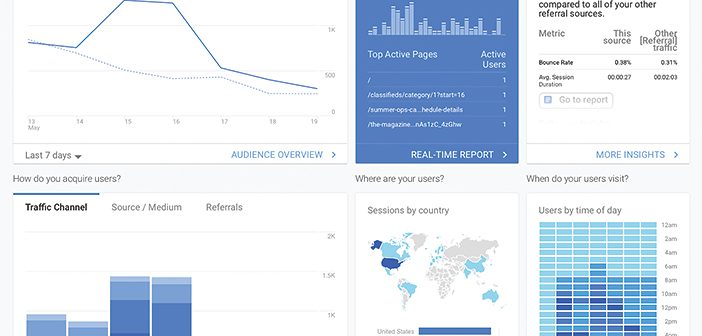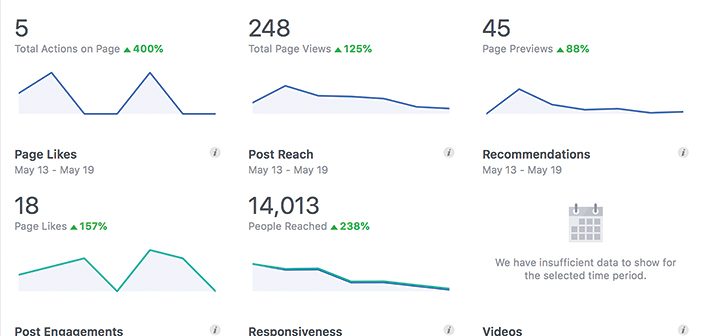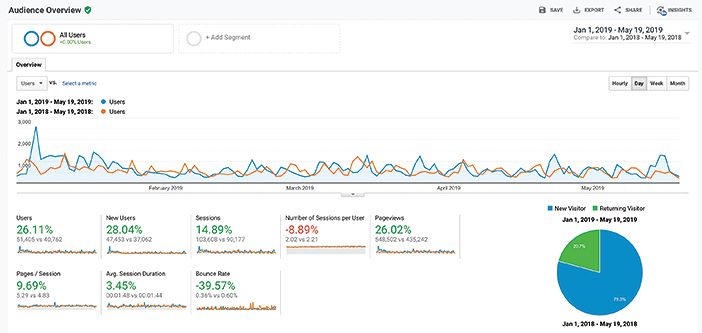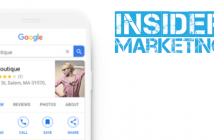Every operator, indeed every business has second-guessed a marketing decision. Whether you’re throwing down a credit card for Google AdWords, putting together a website for the first time, or paying for a billboard on a major thoroughfare, chances are you’ve crossed your fingers and thought, “Oh please, whatever happens, I hope this works.”
We’ve all had these moments. If you’re a business owner, you know that it comes with the territory. But if you’ve been running your business for a while, there are ways to avoid at least some of the pain and agony that come with spending marketing dollars.
How? By testing and measuring your marketing tools. While this may sound daunting, it’s not. You don’t need a degree in finance to know which marketing tools are working best for you. All you really need is awareness, a bit of patience, and a plan.
COMMIT TO MARKETING
The concept behind testing and measuring your marketing is quite simple: find out what’s working, and do more of it. The goal is to identify how and where your customers are finding your business. It’s equally important to examine marketing efforts that aren’t working so you can make tweaks, try something different, or shift more resources to tools that are performing well.
Before you can start measuring a return on your marketing investment, you first need to invest in marketing. Here are some general rules that we like to follow:
1. Set a strong budget. If you are starting an adventure business for the first time, set aside 10-15 percent of your startup budget for marketing. Too often, startup budgets get cannibalized by unforeseen construction or zoning costs. Marketing is often the first thing to go. It shouldn’t be!
2. Invest in both print and digital. If you are uncertain about where to put your marketing money, start with a 50/50 split between print (including brochures, rack cards, and ads) and digital marketing. You can—and probably will—adjust your strategy once you have some data.
3. Stay committed. Once your business is established, continue to allocate 10 to 15 percent of operational expenses toward marketing. It’s not uncommon for businesses to spend money at the beginning of an endeavor, and then shy away from spending any additional money on marketing as the operation matures. Stay strong, and stay the course on your spend.
Remember: You can’t collect data if you don’t first spend some money on marketing.
In addition to these general rules, you should always track the following regardless of your strategy, budget, or depth of other tracking and measuring you choose to do:
• Your total annual marketing budget.
• How much total money you spent on each marketing tool.
• How many customers have found you through each tool.
• How much it costs to put an average customer through your course.
Once you have a budget and a strategy in place—even if it is a preliminary one—you can start to put your marketing dollars to the test and track what is working (or not).
TESTING AND MEASURING 101
For many business owners, the real crux of the matter is figuring out how to get the information in the first place, not deciding what to do with it. Customers may ignore that “How did you find us?” field in the waiver. Or they may have already forgotten how they found out about you. Or your staff may not feel comfortable asking this question every time.
So, here are some of our favorite ways to track which marketing tools are working best for you:
1. Google Analytics
If you don’t have Google Analytics set up on your website, stop what you’re doing right now, call your webmaster, and have him or her install it for you. Or do it right after you finish reading this article. Either way, we can’t emphasize enough how important this is.

Google Analytics provides a wealth of information about your digital visitor.
If you do have Google Analytics set up but haven’t used it much, it’s time to start. Google Analytics is a fantastic tool that can provide in-depth data on everything from how many site visits you get in a day, to how many views each page gets, to how long visitors spend on any given page.
If you don’t have Google Analytics set up on your website, stop what you’re doing right now, call your webmaster, and get it installed pronto.
Furthermore, when you pair it with Google AdWords, your campaign manager can work with you to set up different tracking codes for specific pages, so that you know which keywords and phrases are being clicked on the most. It also helps you see the different paths visitors take to your site, and allows you to track conversions.

Google Analytics can help you identify your strongest acquisition tools and where visits turn into conversion.
Just be forewarned—if this is your first time diving into Google Analytics, it’s really easy to go down the rabbit hole and geek out for hours. But once you get used to it, you’ll start to see which pages are getting the most traffic, and how many visitors are booking through your site.
2. Other Analytics
Most online tools are great for providing in-depth analytics of your marketing efforts—if you know what to look for. Whether you’re using Facebook ads, Instagram, an email newsletter, or any other form of targeted online advertising, most provide detailed performance data—from what time of day someone clicked on your site to what that person had for breakfast. (OK, that last one isn’t true, but the data sure is comprehensive.)

Facebook provides detailed insights for your page.
Heck, even your booking software can tell you who clicked on what, when, and how much they spent.
3. Custom 800 numbers/urls
One common question we hear about print and billboard advertising is, “How do we know if it’s working?” The best way to track the return on investment for billboards is to use custom 800 numbers or landing pages on your website.
Here’s how it works: If you have two billboards in different parts of town, you ask your phone service provider to set up two different 800 numbers for you. One unique number goes on each billboard, and when the calls come in, you can track which phone number they are calling. Often, the billboard with the higher call volume stays, while the other one goes. Of course, make sure that both 800 numbers are different than the one on your website.
The same strategy can be employed using custom urls and landing pages. The cost of managing unique landing pages may be lower than carrying multiple phone numbers.
Of course, billboard phone numbers and urls need to be short and easy to remember. Passersby typically only have about 2-3 seconds to read what’s on your billboard. So, use 800 numbers that correlate to specific words or phrases that people will remember, such as 800-ZIP-HERE. Same for a url: ziptour.com/deal.
4. Custom Coupon Codes
Including a discount coupon in rack cards or brochures that folks can grab at nearby hotels and partner locations is a great way to get people in the door. An easy way to know where they found your brochure is to create a unique coupon code for each destination where these cards are stocked. It could be a bar code, a QR code, or a unique word that they must provide (SAVE1, SAVE2, SAVE3, for example).
Sure, the print costs may be slightly higher, but in the long run you’ll save money by knowing which locations generate the most customers. You can then dedicate more shelf space to the best-producing venues, and less to others. Remember: if you offer a discount, make sure you’re still making money on each customer that walks through your doors!
5. Ask!
The most basic form of tracking is to simply ask customers how they found out about you. This can be done on your booking form, your waiver, or a follow-up survey. While it’s not perfect, some information is better than none.
Whenever and wherever you ask, make it easy for customers to answer, or they’ll just skip it. For example, a short list of options to choose from requires less reading, and it takes less time. You can also try different variations of asking people how they found out about your business, i.e., multiple choice for some, fill in the blank for others. Keep track of which version has a higher rate of completion, and stick with the one that works.
KEEPING TRACK OF IT ALL
It’s great to have all of this data, but it’s only as good as what you do with it. For example, if you’re spending the money to have multiple 800 numbers on billboards, make sure someone is actually tracking how many calls come from each, and how many callers are booking. Even if some of these tools come with their own tracking software, you still need to collect it all somewhere—and you’ll want an actual human being to get eyes on it.
Recognize that it is really easy for a human being to get lost in all the data these tools provide. Often, business owners get completely bogged down analyzing the details, or they give up and completely ignore the data that is provided.
To avoid either of these outcomes, choose one advertising tool, learn how to read it well, and see how it performs. Then you can expand to other channels.
Now, understand that some of your marketing tools may not work right away, and that’s okay. Before pulling the plug completely, look not just at what isn’t working, but why it isn’t working. Is the billboard in the wrong location, or is the phone number too hard to read? Are Google AdWords not driving enough traffic to your website, or is the issue with your website itself? Are the rack cards stocked at the rafting company down the road being ignored, or has the season just not started yet?

Compare performance year-over-year to understand growth.
The reality is: not everything is going to work, especially not right away, without some tweaking. Once you know why, though, you can make adjustments. You can’t fix a strategy if you don’t know whether or not that strategy is working.
JUST DO SOMETHING
If all of this seems like too much, remember that something is always better than nothing. If your first step is to simply add a line item that asks people how they found out about you, great! It’s information you didn’t have before. If you want to venture into the world of AdWords for the first time, go for it. Just make sure you have someone keeping track of what’s working, and where the dollars are going.
At the end of the day, tracking and measuring the performance of your marketing will help you make sound decisions. If all of your customers are finding you through your Google AdWords, it’s working, so spend more money there. If the promo you’re offering in partnership with the hotel down the road is sending tons of business your way, perfect! Seek out more partnerships in the area, and make sure to visit your friends at the hotel down the road to thank them for their ongoing referrals.
Over time, you’ll start to notice those trends, and you’ll be able to pour more dollars into the marketing tools that work best for your business. And if you’re successful, you can stop saying, “I hope this works.” Because with the right data, you won’t have to guess, you will know what will work.






